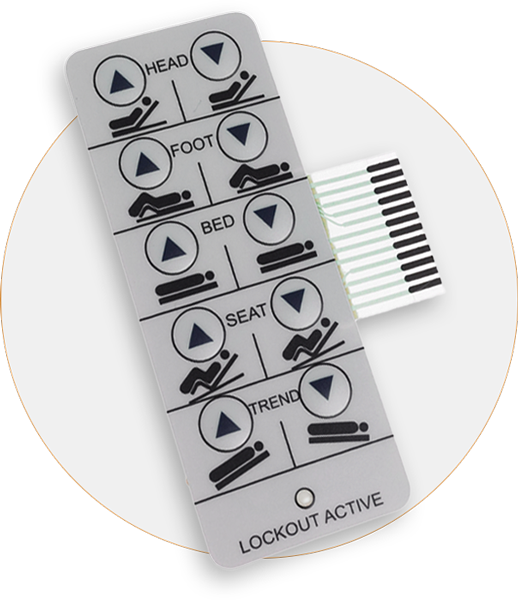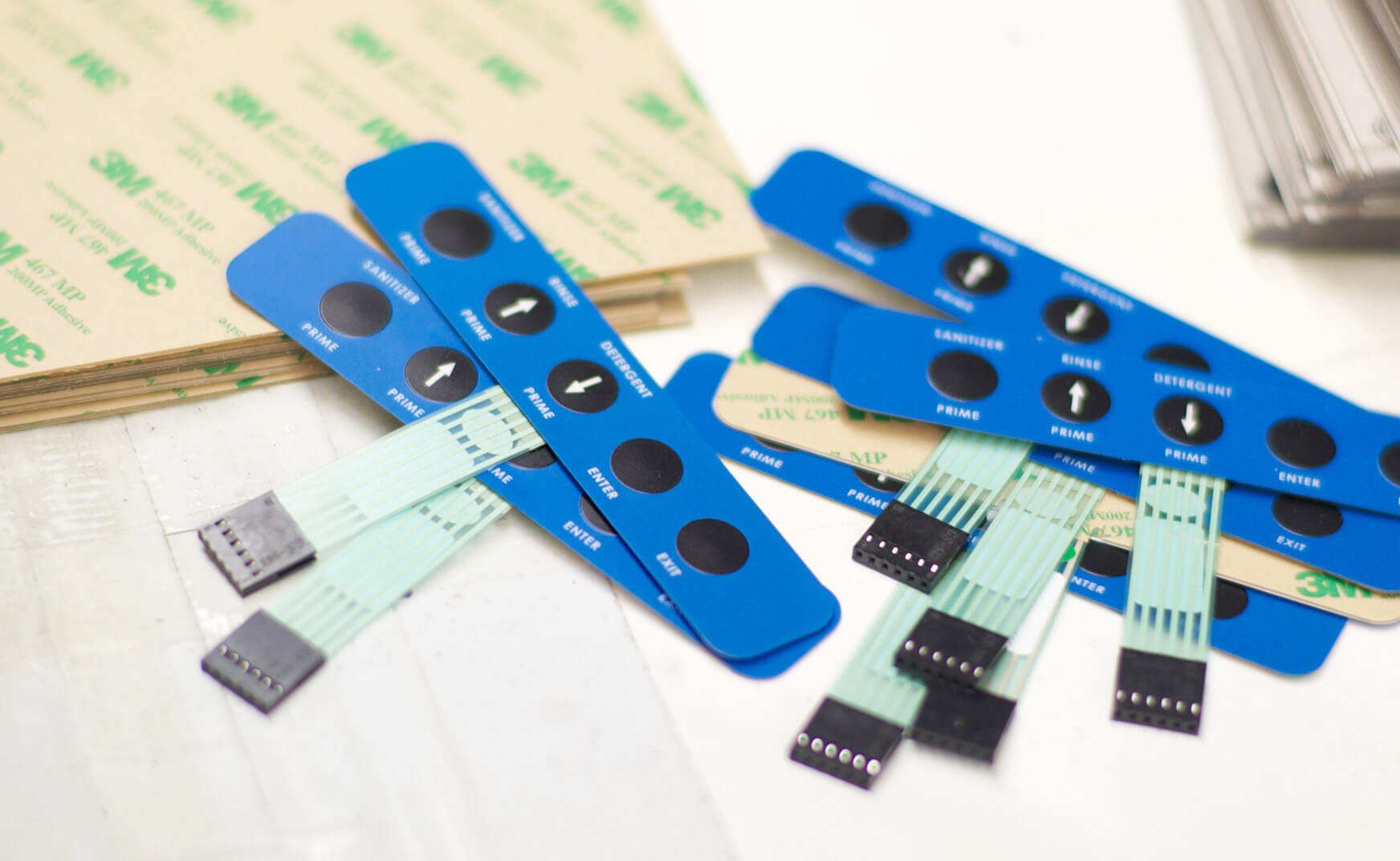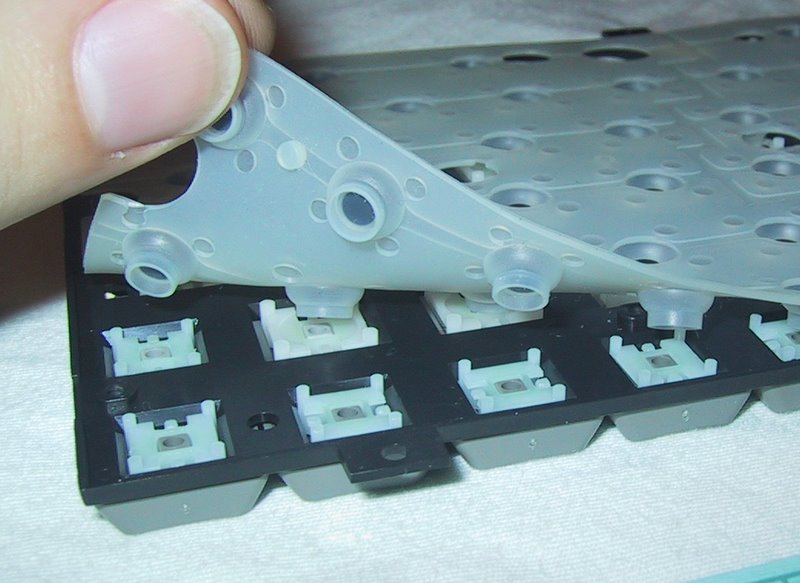Many product developers favor working with a proven membrane switch manufacturer for custom builds.
Many product developers favor working with a proven membrane switch manufacturer for custom builds.
Blog Article
Everything About Membrane Layer Change: Understanding Its Style and Performance
When you think of the control user interfaces in modern gadgets, membrane switches usually come to mind. These elements are greater than just buttons; they mix layout and capability seamlessly. Understanding just how they work and what makes them effective can transform your point of view on everyday electronic devices. But, there are nuances to their layout and performance that you could not recognize. Allow's discover what collections membrane layer switches besides other control systems.
What Are Membrane Switches?

Their seamless nature makes them simple to tidy and resistant to dust and wetness, a crucial function in lots of settings. Membrane layer switches can likewise be tailored relating to shape, dimension, and graphics, allowing suppliers to create unique user interfaces tailored to particular items. And also, they're light-weight and thin, which helps in reducing the total mass of tools. On the whole, membrane layer switches play a considerable role in boosting user experience across a wide range of applications.
Just How Membrane Layer Switches Over Work
When you press a trick on a membrane switch, it turns on a simple yet reliable device. The leading layer, usually made from versatile product, lowers onto a conductive layer underneath it. This action bridges the space in between conductive traces, completing an electrical circuit. As quickly as the circuit closes, it sends out a signal to the device's controller, which translates your input.
You'll discover that the responsive responses differs based on the switch design, supplying either a soft click or an extra pronounced reaction. Once you release the trick, the membrane returns to its original position, resuming the circuit and stopping the signal. This procedure occurs nearly instantaneously, ensuring a receptive individual experience.
Membrane switches are preferred due to their sturdiness and resistance to dust and moisture, making them optimal for various applications, from household appliances to clinical devices. Understanding this operation aids you value their widespread usage.
Secret Parts of Membrane Buttons
Comprehending the key elements of membrane layer buttons is essential for realizing their functionality and style. At the core, you'll find the visuals overlay, which provides the aesthetic interface for users. Beneath that, there's a spacer layer that separates the circuit layers, making certain that they do not make contact until pushed. The circuit layer is where the magic takes place; it consists of conductive traces that complete the circuit when you press the switch. One more crucial component is the sticky support, permitting the button to abide by surfaces firmly. The safety layer shields versus ecological aspects and put on, extending the button's lifespan. Each part plays a substantial role in ensuring dependable performance and individual interaction. By recognizing these parts, you'll obtain insight right into just how membrane changes run and their value in various applications.
Materials Made Use Of in Membrane Change Style
The efficiency and durability of membrane layer switches over greatly rely on the products used in their layout. You commonly experience polyester and polycarbonate as key substrates due to their exceptional toughness and versatility. These products resist scratches and chemicals, making them perfect for requiring settings.
The conductive layers often use silver or carbon, picked for their integrity and conductivity. membrane switch manufacturer. Silver offers superior performance, while carbon is an economical option. For the overlay, you could think about a matte or shiny surface, relying on your aesthetic requirements and individual experience
Adhesives play a vital role also; they bond layers securely and assure durability. Make certain to select adhesives that withstand ecological aspects like temperature level and humidity. Do not overlook the relevance of a good printing strategy for graphics, as it boosts both capability and visual allure. Selecting the best materials will certainly ensure your membrane layer switch stands the test of time.
Design Considerations for Membrane Buttons
While designing membrane layer buttons, it's crucial to consider numerous factors that influence their functionality and individual experience. Start by focusing on the design and button size; make sure they're intuitive and easy to browse. Consider the responsive feedback you intend to provide-- will users need a visible click or a softer touch? Additionally, consider the materials you'll use, as they'll affect resilience and aesthetic appeals.
Validate your design accommodates environmental elements, like moisture or temperature variations, which might impact efficiency. By very carefully thinking about these elements, you'll create a membrane button that enhances usability and contentment.
Applications of Membrane Buttons
Membrane switches are versatile parts discovered in different applications, from industrial equipment to consumer electronic devices. You'll see their effect in devices that require sturdy user interfaces and in devices that gain from smooth designs. Recognizing these applications assists you appreciate the capability and practicality of membrane layer switches in everyday technology.
Industrial Devices Use
When you're looking to boost the functionality of commercial equipment, membrane layer switches provide a trustworthy solution that combines sturdiness with easy to use layout. These buttons are best for her response harsh settings, giving resistance to dust, wetness, and chemicals. Accept membrane buttons to streamline your procedures and improve general efficiency.
Consumer Electronics Assimilation
In the domain name of consumer electronics, membrane switches play a vital function in improving user interaction and gadget functionality. You'll find them in gadgets like microwaves, remote controls, and pc gaming consoles, providing a seamless method to interact with innovation. Their sleek design enables easy integration into various items, making controls instinctive and user-friendly. With their ability to integrate graphics and backlighting, you can appreciate a modern-day aesthetic that complements the device's total look. Membrane switches additionally see page guarantee resilience and resistance to dust and wetness, prolonging the life expectancy of your electronic devices. By picking membrane buttons, you improve not simply the performance but also the design of your gadgets, making daily communications smooth and delightful.
Benefits and Disadvantages of Membrane Switches
While membrane switches provide a variety of advantages, they also come with some drawbacks that you need to take into consideration. One considerable advantage is their compact layout, making them suitable for space-constrained applications. They're also affordable, providing a resilient option with a reduced production cost. In addition, their smooth surface is simple to tidy, enhancing health in environments like healthcare facilities.

Membrane switches can have a much shorter life expectancy contrasted to mechanical buttons, specifically under hefty use. They can also be much less responsive, which could influence customer feedback throughout procedure. Balancing these pros and disadvantages will help you identify if membrane layer buttons are the appropriate fit for your task.
Regularly Asked Inquiries
Just How Long Do Membrane Switches Usually Last?
Membrane switches generally last between 5 to ten years, depending upon usage and environmental conditions. You'll intend to evaluate variables like wear, exposure to dampness, and temperature level variations to assess their durability efficiently.
Can Membrane Switches Be Customized for Details Layouts?
Yes, you can personalize membrane switches view website to fit particular styles (membrane switch manufacturer). You'll have the freedom to pick colors, shapes, and formats that match your project's needs, guaranteeing they blend perfectly with your overall aesthetic
What Is the Price Range for Membrane Layer Switch Manufacturing?
The cost variety for membrane switch manufacturing normally falls between $1 and $10 each, relying on factors like layout complexity, quantity, and materials. You can obtain quotes from producers to discover the very best alternative.

Are Membrane Switches Water-proof or Immune?
Membrane switches can be developed to be water-proof or resistant, depending on materials used and building approaches. If you require them for damp settings, guarantee you specify those requirements throughout the style process.
Just How Do Membrane Switches Over Contrast to Typical Switches?
Membrane buttons are typically thinner and extra versatile than typical switches, providing a sleek style. They're frequently less complicated to cleanse and incorporate, however could not offer the responsive comments you're made use of to with mechanical alternatives.
Verdict

Report this page